| We travelled on eastwards through Omaha passing Kennefick Park where UP6900 is on display together with 'Big Boy' UP4023. They are the largest locomotives ever built in the US. | 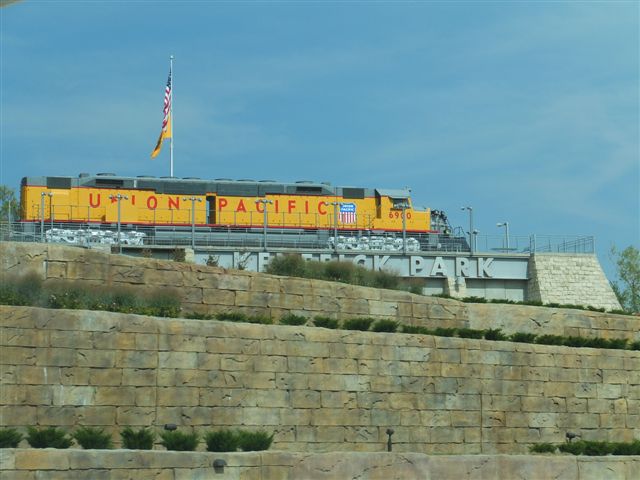 |
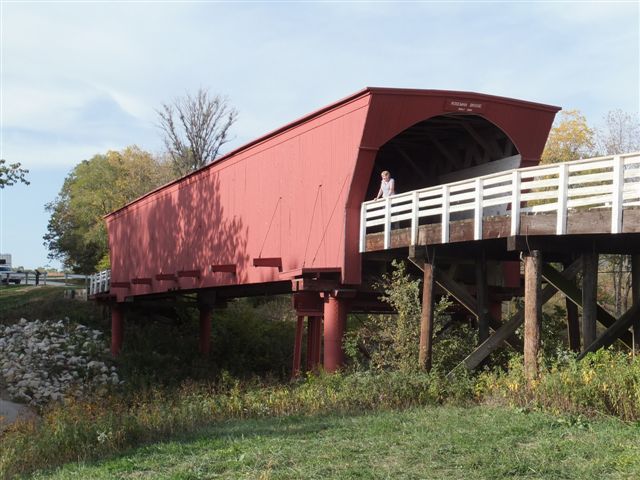 |
We were heading for Winterset in Iowa where the film 'The Bridges of Madison
County' was made. There are covered bridges in other parts of the US, but
the original novel was based on these actual bridges. |
| This is the most famous,
the Roseman Bridge built in 1883. The cover protects the bridge deck from
icing. It carried road traffic for almost 100 years before it was bypassed
in 1981. | 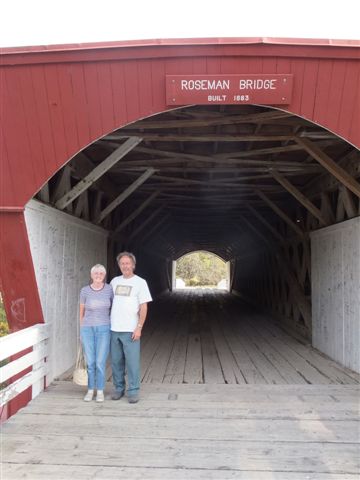 |
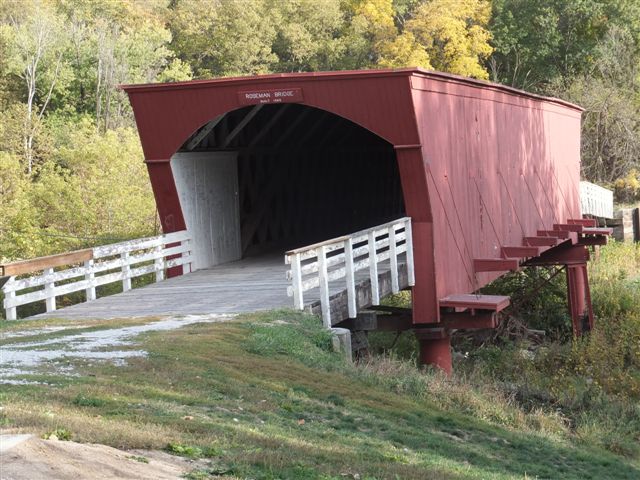 |
It is 104ft long and 15.4ft wide and was built by Benton Jones. He later
strengthened the bridge by adding a queen post truss. It probably explains
why the bridges have survived when others have collapsed. |
| This is the Cutler-Donahoe
bridge built in 1870. It is the only one which is not on its original site and
is now in the town park. | 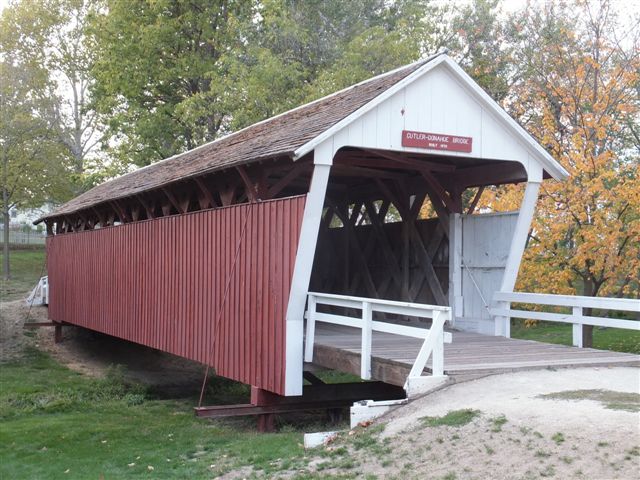 |
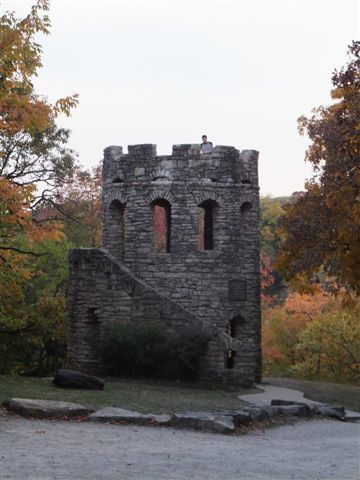 |
We had had a long drive so we walked out to this tower which I suppose we
would call a folly. There are views over the surrounding country in the
setting sun. |
| It is most definitely
fall and the colours are all over the countryside as we travel east and
north. | 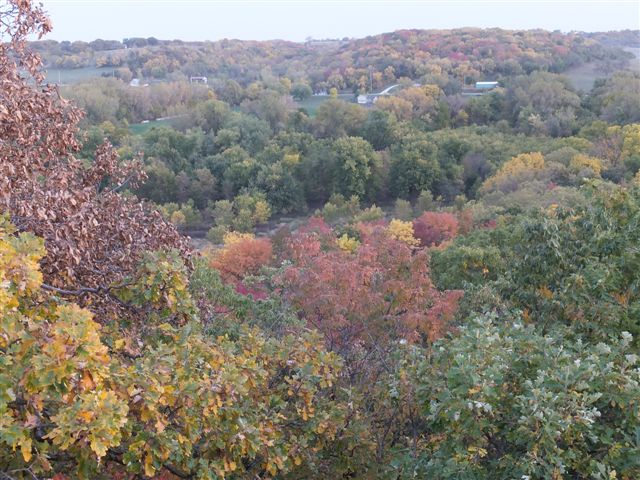 |
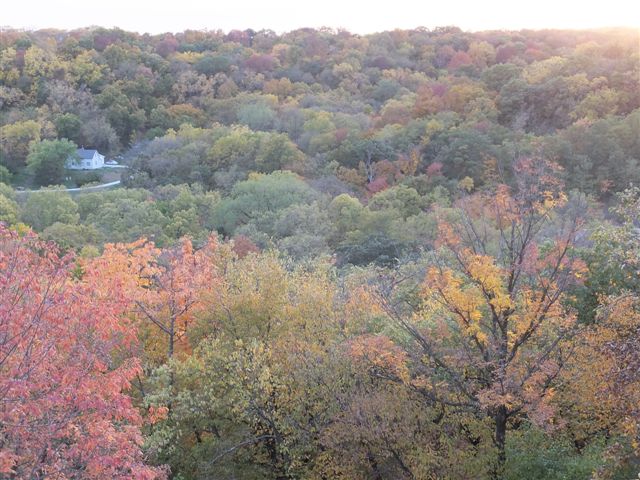 |
You don't need to be in New England to get the fall colours although they
are more spectacular in some places than others depending on the type of
tree in the area. |
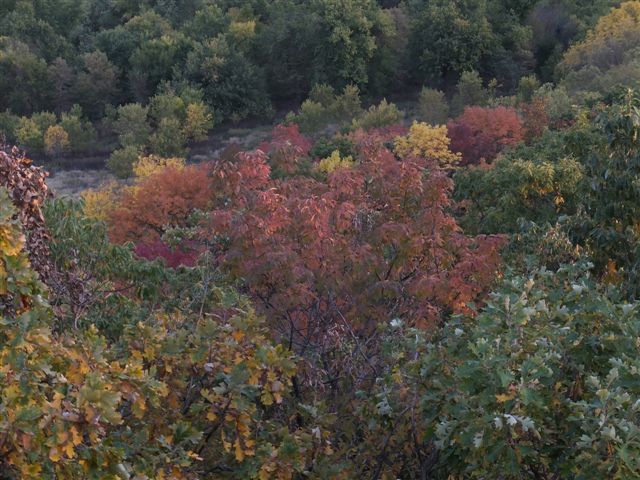 |
The reds are mainly maples and the yellows are aspens. |
| But there are many other
varieties. I'm still experimenting with the zoom on the camera which is
quite remarkable. | 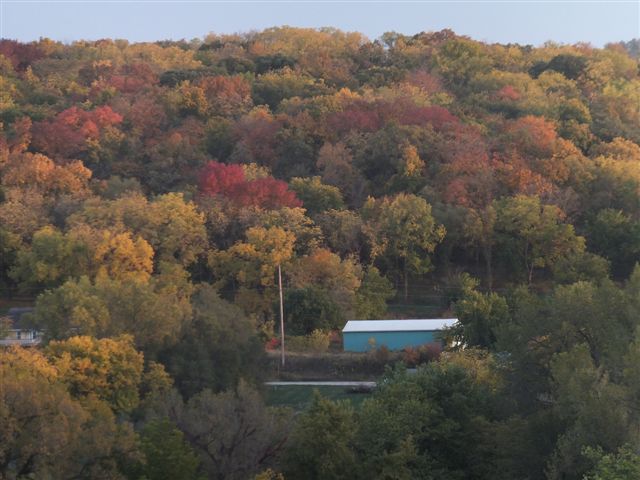 |
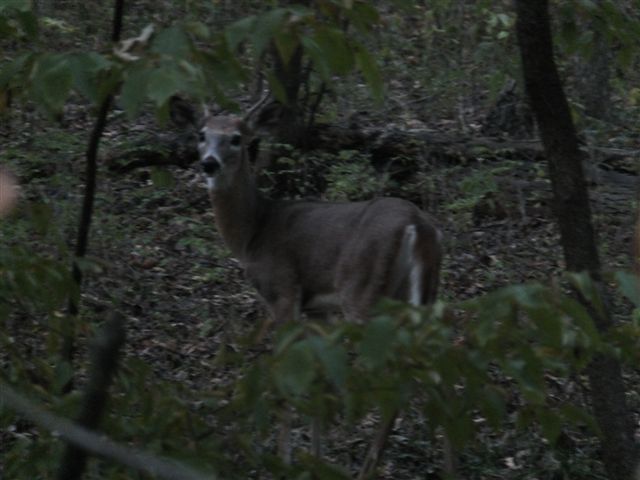 |
It was almost dark as we returned since dusk comes quite quickly. The deer
have come out and I caught this one with almost no light and on full optical
zoom. |
| The town is a very
typical small mid-western town. Its other claim to fame is as the birthplace
of John Wayne. So lots of things bear his name. This is the town hall. | 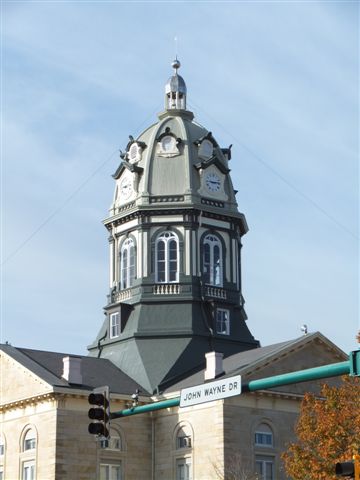 |
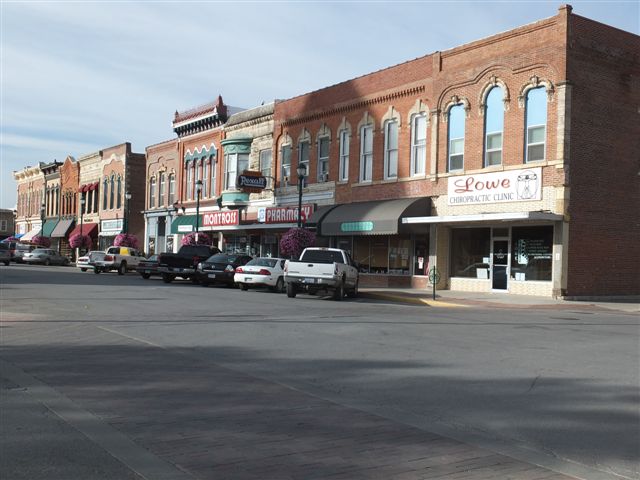 |
As in old westerns the fronts of buildings are well made. The rears were and
often still are much
simpler structures and of much lower quality. |
| The man himself, or at
least a cardboard replica. His house has been turned into a small museum. I
think the bridges and his place provide a lot of the income for the town. | 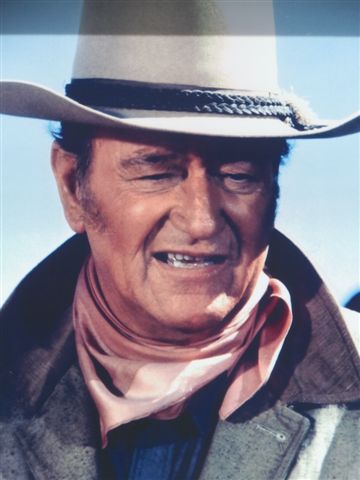 |
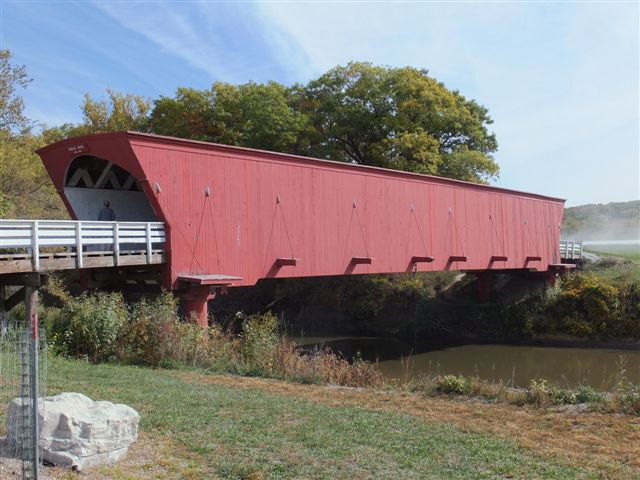 |
This is the 1884 Hogback Bridge. Situated about five miles out of town it
was the most difficult to find. All the roads apart from the real main roads
are gravel and not well signposted. We got lost several times. |
| You begin to see how the
storyline in the film that he was looking for the bridge is so plausible. | 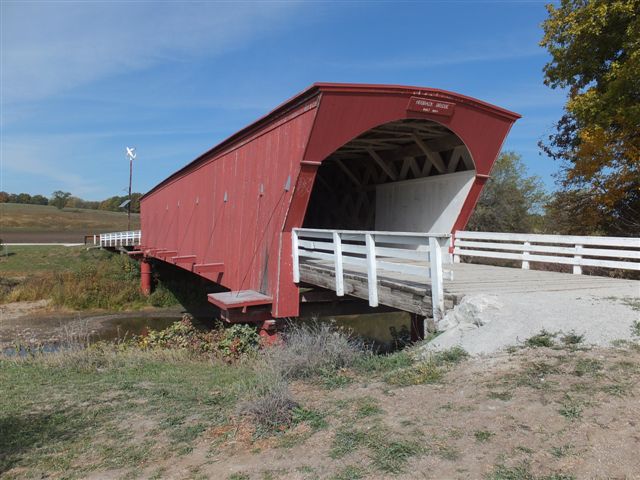 |
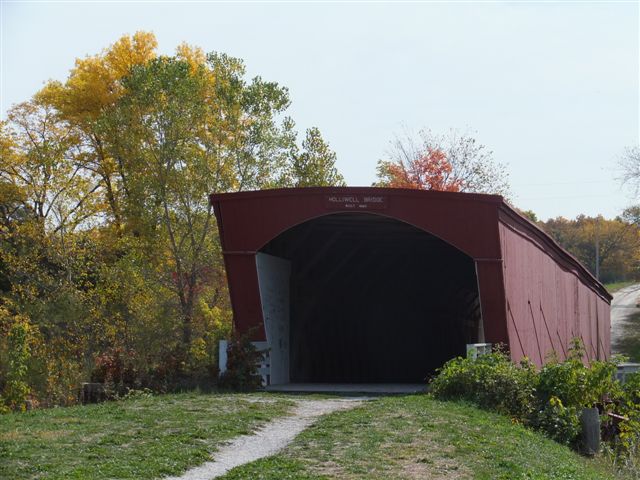 |
Another major bridge is the 1880 Holliwell Bridge but this was much easier
to find. |
| .. | 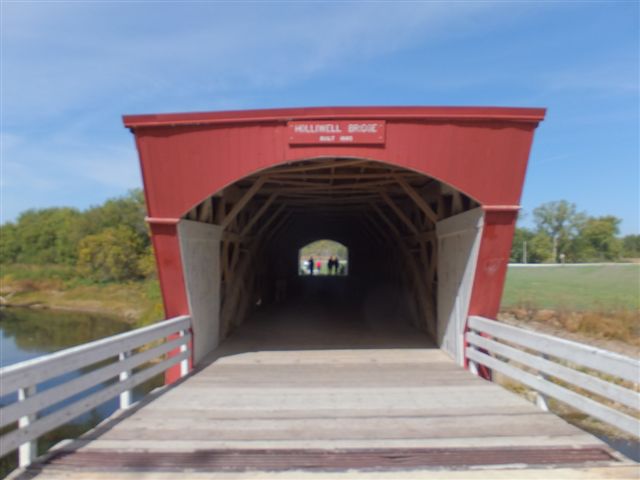 |
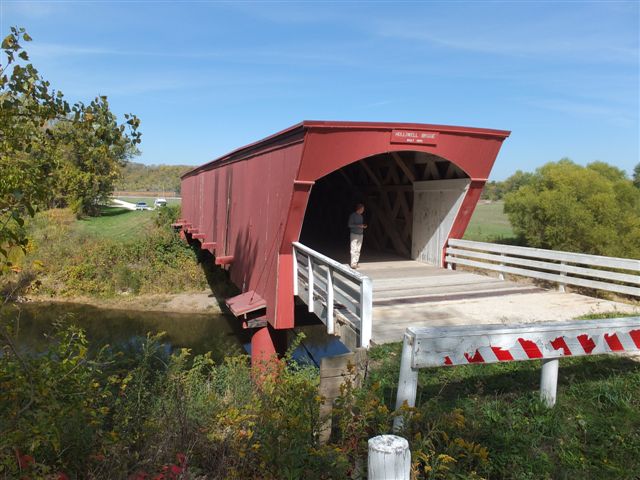 |
None of the bridges carry traffic today. |
| The last bridge is about
14 miles to the south. This is the Imes Bridge and it was built in 1870. | 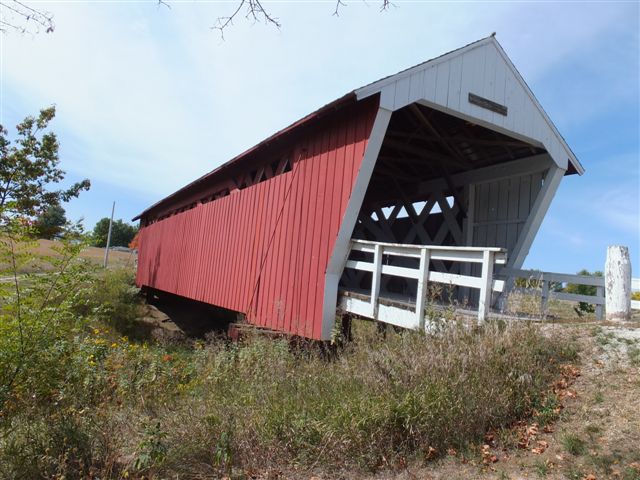 |
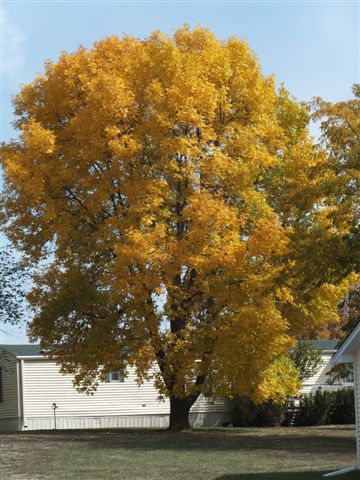 |
Autumn colours in full glow. Unfortunately they disappear with the first
good bout of wind or rain. |
| Iowa's gravel roads
raised a lot of dust and the camper was absolutely covered inside and out.
It took several days to clean. | 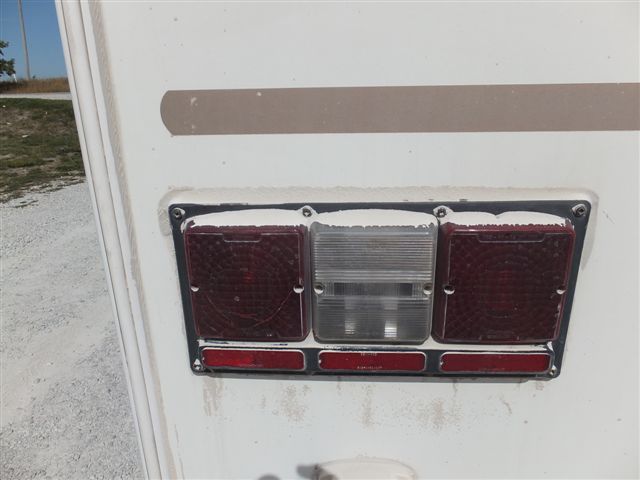 |
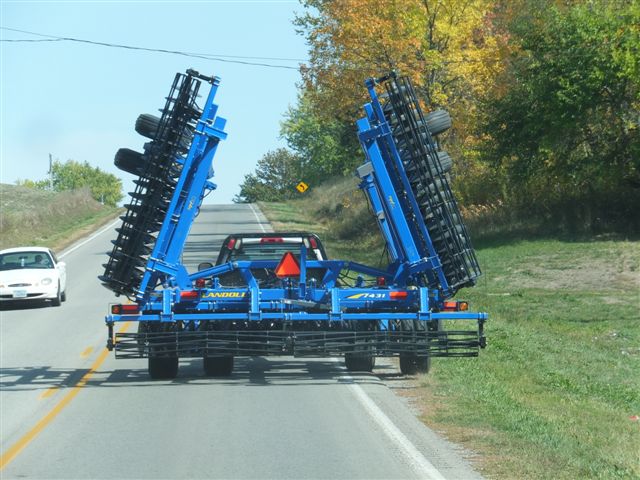 |
Iowa is farming country and sights like this are commonplace. |
| So too is this. There
are many Amish living in the area. They still use horses and buggies and shun
the use of modern vehicles and indeed any modern forms of technology. | 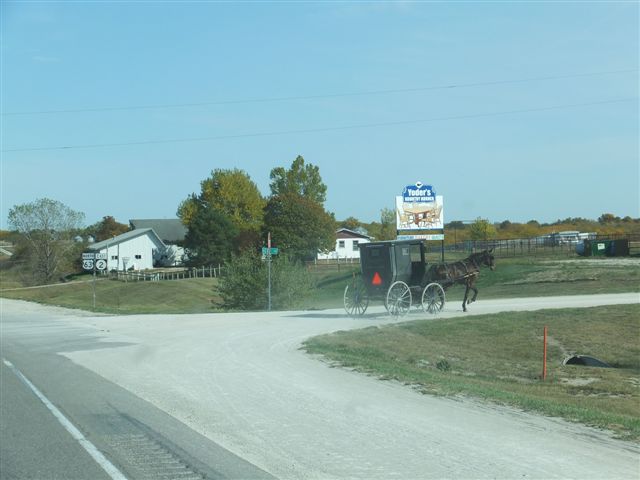 |
|